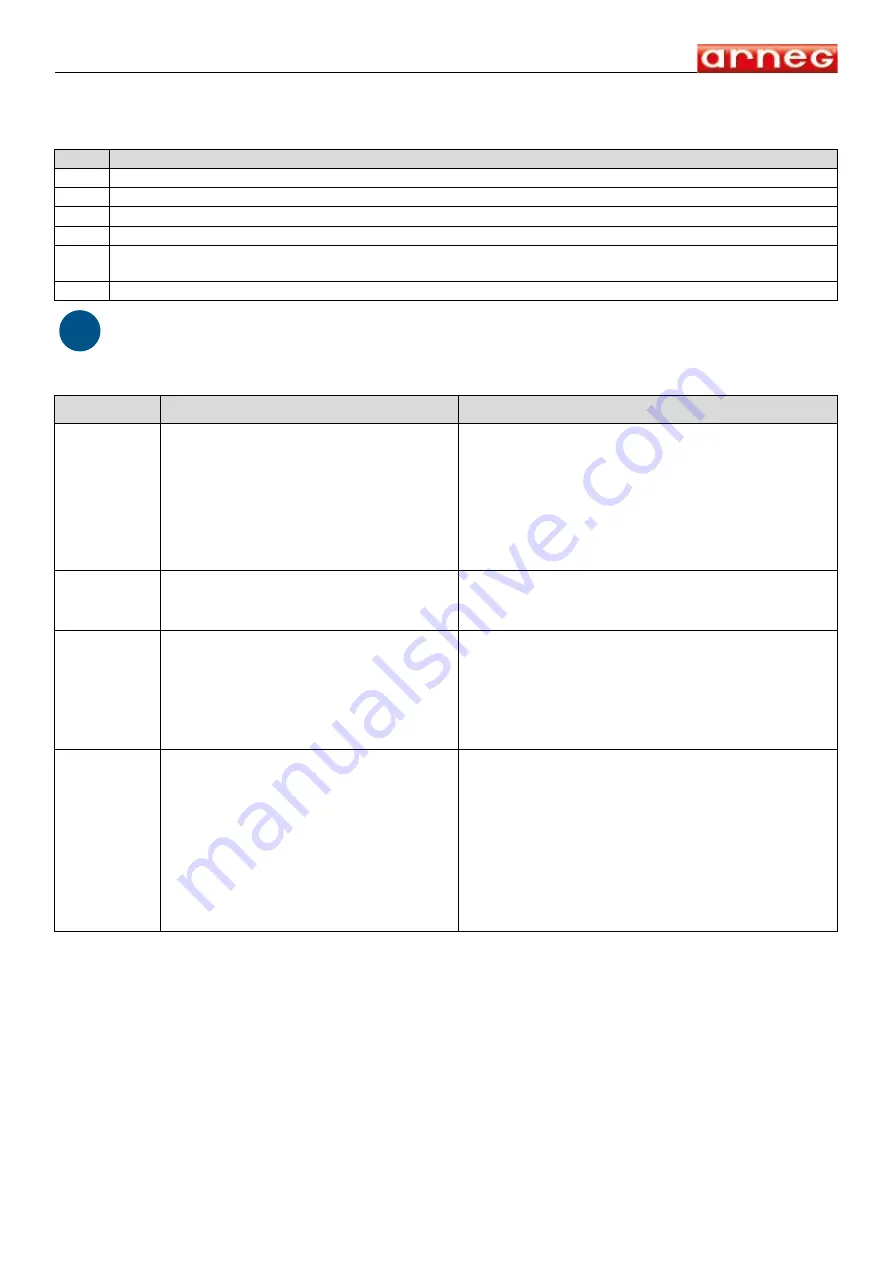
M al ag a
E n g l i s h
05060172 00 11-07-2017
3 8
19. 4
Clean the internal parts (Monthly)
Refer to chapters 19. 1 and 19. 2 and follow the steps given:
Pitch
Action
1
remove all goods from the cabinet
2
remove all the removable parts, such as display dishes, grid trays, etc.
3
wash with lukewarm water (max 30°C)
4
disinfect using an antibacterial detergent.
5
carefully clean the bottom tank, the drip, and the grid that protects the water drain, elimina-
ting all foreign bodies that have fallen through the suction grid lifting the sheet of the fans.
6
carefully dry using a soft cloth
i
Should you notice ice built up, call a specialized technician.
19. 5
Clean specific materials
Material
Remedy
What to avoid
Glass
•
use a soft cloth with a neutral
detergent or soap and lukewarm
water (max 30°C).
•
Immediately remove all traces of
water and detergent with a dry
cloth in order to prevent marks
from forming and to prevent liquid
from reaching the gaskets, frame,
or the glass door hinges.
DO
NOT use hot water on cold glass surfaces;
the glass could crack and injure the operator.
DO
NOT use rough or abrasive materials or
metal scrapers that could scratch the glass
surfaces
DO
NOT use dirty cloths
Plastic
(door seal
profiles)
•
use a cloth soaked in neutral deter-
gent
•
clean with a cloth soaked in clean water
DO
NOT use waxes, concentrated detergents,
which contain oil, bleach, glass cleaners, abra-
sive detergents or flammable fluids
Aluminium
•
Use a soft cloth with a neutral
detergent or soap and lukewarm
water (max 30°C).
•
Immediately remove all traces of
water or detergent using a dry
cloth in order to prevent marks
from forming.
DO
NOT use acid or alkaline detergents (e.g.
bleach) which could corrode the surfaces
DO
NOT use rough or abrasive materials or metal
scrapers that scratch the aluminium surfaces
DO
NOT use steam cleaning equipment
DO
NOT use dirty cloths
Wood
•
Use a soft cloth with a neutral deter-
gent or soap and lukewarm water (max
30°C).
•
Immediately remove all traces of
water or detergent using a dry
cloth in order to prevent marks
from forming.
•
before treating the entire surface,
test on a small hidden area and ve-
rify that the cleaner will not dama-
ge the finish or color
DO
NOT use spray cans, acid or alkaline de-
tergents (e.g. bleach), soda or solvents which
could corrode the surfaces
DO
NOT use rough or abrasive materials that
could scratch the surfaces
DO
NOT use steam cleaning equipment
DO
NOT use rough cloths
mod
erate the use of liquid detergent: overuse
causes seepage and then swelling of the wood
19. 6 Clean the stainless steel
Certain situations can cause the formation of rust on the surfaces in steel:
iron remains left on damp surfaces, limestone, chlorine or ammonia based detergents not rinsed
properly, food incrustations or residues, salt-saline solutions, dry residues of evaporated liquids.
Summary of Contents for Malaga H160 ventilated
Page 2: ......
































